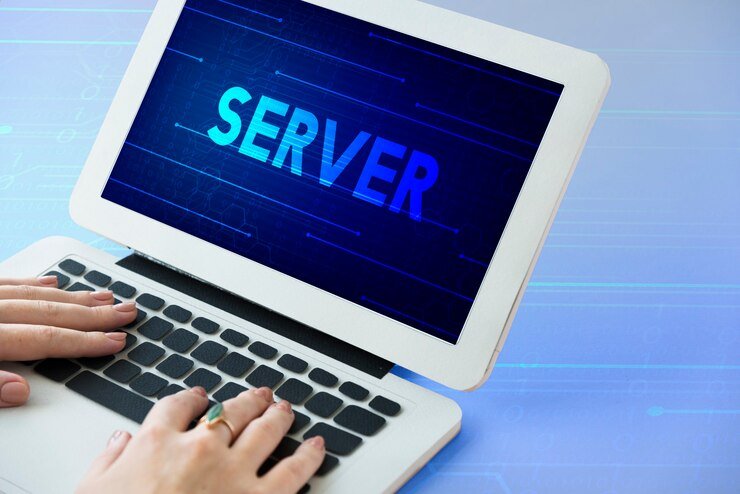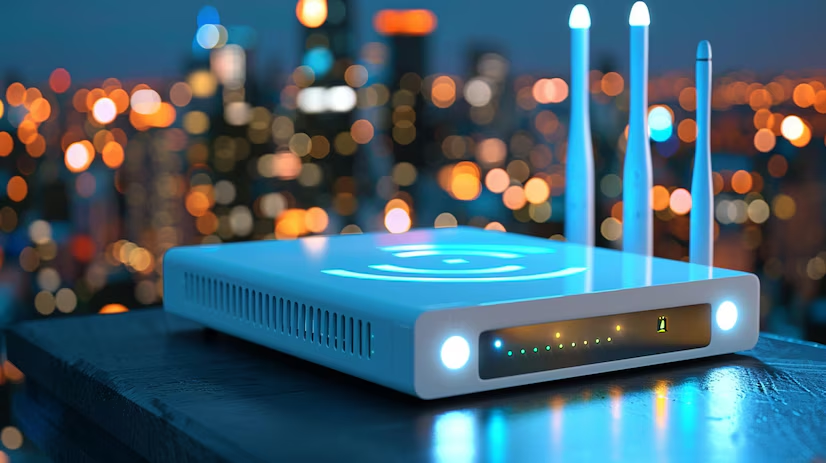
Imagine sitting down to work or stream your favorite show, only to be met with the dreaded “no internet connection” message. Your heart sinks as you realize it might be an issue with your IP addr. This situation can feel overwhelming, but troubleshooting IP address issues doesn’t have to be a daunting task. Whether you’re a tech novice or someone who dabbles in network setups, understanding how to resolve these issues is essential for maintaining connectivity and productivity.
IP addresses are the lifeblood of our online experiences, directing traffic between devices and networks. When problems arise, knowing what steps to take can make all the difference. Let’s dive into common IP address troubles and explore straightforward solutions that will get you back online in no time!
Understanding IP Addresses
IP addresses, or Internet Protocol addresses, serve as unique identifiers for devices connected to a network. Think of them like your home address but for the digital world. Each IP address allows data to travel back and forth between your device and others across the internet.
There are two main types: IPv4 and IPv6. IPv4 consists of four sets of numbers separated by periods, while IPv6 uses a longer format with colons, accommodating more devices as our online world expands.
Dynamic IP addresses change frequently through your Internet Service Provider (ISP), whereas static ones remain constant. This distinction is crucial when troubleshooting connectivity issues since knowing which type you’re working with can guide your approach.
Understanding these basics prepares you for identifying problems that may impact your connection or browsing experience. Familiarity with how IP addresses function opens the door to effective troubleshooting strategies down the line.
Common IP Address Issues
IP address issues can be frustrating and often lead to connectivity problems. One common issue is an IP conflict. This occurs when two devices on the same network are assigned the same IP address, causing confusion in data transmission.
Another frequent problem is a misconfigured subnet mask. If this setting doesn’t match your network configuration, it can hinder communication between devices.
Dynamic IP addresses may also present challenges. These addresses change frequently, which might disrupt consistent access to certain services or applications.
Some users face difficulties due to incorrect DNS settings. If these settings aren’t properly configured, web pages may fail to load or take longer than usual.
Expired leases from DHCP servers can cause temporary disconnections as devices struggle to obtain new addresses within the allotted time frame.
Troubleshooting Steps:
When facing IP address issues, start by checking network connectivity. Ensure your device is connected to the correct network. Look for Wi-Fi signals or Ethernet connections that may be loose.
Next, restart both your router and modem. Sometimes, a simple reboot can resolve many connection problems without further intervention.
If that doesn’t work, consider releasing and renewing your IP address. This process refreshes your connection to the network and often clears up conflicts.
Updating network drivers is another crucial step. Outdated drivers can lead to performance issues or disconnections altogether.
Scan for malware or viruses on your device. Some malicious software interferes with networking operations, causing IP-related troubles you might not expect at first glance. Addressing these aspects will significantly help in troubleshooting any persistent IP address challenges you encounter.
A. Check Network Connectivity
Before diving deep into troubleshooting IP address issues, it’s essential to check your network connectivity. A stable connection is the foundation for a reliable Internet experience.
Start by ensuring that your device is connected to the correct network. Sometimes, multiple networks may be available, and it’s easy to connect to an unintended one. Double-check this in your settings.
Next, inspect any physical connections if you’re using Ethernet cables. Loose or damaged cables can lead to intermittent connectivity problems.
If you use Wi-Fi, look at other devices on the same network. Are they experiencing similar issues? If so, it might indicate a problem with the router rather than just your device.
Consider restarting your device’s Wi-Fi function or toggling Airplane mode on and off for a quick reset of relationships with nearby networks. This simple step can often resolve minor glitches before moving onto more complex solutions.
B. Restart the Router and Modem
Restarting your router and modem can often resolve many connectivity issues. This simple step resets the devices, clearing temporary glitches that may be causing problems.
To begin, unplug both the router and modem from their power sources. Wait for about 30 seconds to a minute; this allows any residual charge to dissipate.
Once done, plug in the modem first and give it a moment to fully boot up. Look for solid lights indicating it’s connected properly. Only then should you reconnect the router.
After powering them back on, wait again until all indicator lights return to normal status. This process refreshes your network connection and might just solve those pesky IP address issues you’ve been facing.
If problems persist after this reboot, it’s time to dig deeper into other troubleshooting methods available at your disposal.
C. Release and Renew IP Address
Releasing and renewing your IP address can resolve many connectivity issues. This process involves refreshing your network connection, which might get disrupted due to various factors.
To begin, you’ll need to access the Command Prompt on your device. Simply search for “cmd” in the Start menu and run it as an administrator. Once open, type in “ipconfig /release.” This command will disconnect your current IP address from the network.
Next, follow that by typing “ipconfig /renew.” This action requests a new IP addr from your router or ISP. It’s a straightforward step but often effective in resolving conflicts that cause internet disruptions.
After executing these commands, check if you can connect to the internet again. If issues persist, don’t worry; other troubleshooting steps are available to explore further solutions.
D. Update Network Drivers
Keeping your network drivers up to date is crucial for smooth connectivity. Outdated drivers can lead to IP address issues, creating frustrating experiences when trying to access the internet.
To update your network drivers, start by checking the manufacturer’s website. Many manufacturers release updates that enhance performance and fix bugs. Downloading these updates directly ensures you have the latest version.
You can also use device management tools built into your operating system. For Windows users, accessing Device Manager is straightforward. Locate “Network Adapters,” right-click on your adapter, and select “Update Driver.” This option will search automatically for any available updates.
Regularly updating your drivers not only resolves current problems but also prevents future ones. A robust connection relies heavily on having the newest software running behind the scenes.
E. Check for Malware or Viruses
Malware and viruses can wreak havoc on your device, including causing issues with your IP address. If you’re experiencing connectivity problems, it’s essential to consider the possibility of malicious software.
Start by running a full antivirus scan. Many times, these programs can detect hidden threats that interfere with network settings. It’s worth taking the time to ensure your system is clean.
If you don’t have an antivirus program installed yet, consider downloading reputable options like Malwarebytes or Avast for immediate protection. Free versions often provide sufficient scanning capabilities to identify potential issues.
Additionally, keep your operating system updated. Security patches are crucial in safeguarding against vulnerabilities that malware exploits.
After cleaning up detected threats, restart your computer and check if the IP address issue persists. A clean slate could just be what you need for seamless connectivity again!
Advanced Troubleshooting:
Advanced troubleshooting can be a game-changer when dealing with stubborn IP address issues. First, checking your firewall settings is crucial. Sometimes, firewalls block legitimate traffic and prevent devices from connecting properly.
If that doesn’t solve the problem, consider resetting the TCP/IP stack. This might sound technical, but it’s simply refreshing how your computer handles network protocols. It can resolve lingering connectivity problems effectively.
Don’t forget about Command Prompt commands like ipconfig and ping. These tools provide insight into your current network status and help identify any disconnects or misconfigurations in real-time.
Using these advanced techniques not only addresses immediate concerns but also enhances overall performance in managing your IP addr-related issues efficiently.
A. Check Firewall Settings
When troubleshooting IP address issues, checking your firewall settings is crucial. A misconfigured firewall can block legitimate traffic and interfere with network connectivity.
Start by accessing the firewall settings on your device. Look for any rules or policies that might restrict access to certain applications or services. Ensure that essential ports are open and not being blocked inadvertently.
If you’re using a third-party security solution, dive into its configuration as well. Sometimes these programs have their own firewalls separate from the built-in operating system options.
Temporarily disabling the firewall can help identify if it’s causing problems with your IP address. If this resolves the issue, revisit the settings to make necessary adjustments without leaving your system vulnerable. Remember, keeping security tight while ensuring functionality is key in managing effective network performance.
B. Reset TCP/IP Stack
Resetting the TCP/IP stack can resolve various connectivity issues. This process essentially reinstalls the communication protocols your computer uses to connect to the internet.
To reset it, open Command Prompt as an administrator. Type in “netsh int ip reset” and hit enter. This command will clear any misconfigurations that may exist within your network settings.
After running this command, restart your computer. The fresh configurations should help you regain access to the web or fix intermittent connection problems.
Remember, resetting the TCP/IP stack won’t delete , or applications. It’s a straightforward way to refresh how your device interacts with networks, potentially solving frustrating IP address troubles without heavy lifting.
C. Use Command Prompt Commands (ipconfig, ping)
Using Command Prompt can be a powerful way to troubleshoot IP address issues. It allows you to quickly check your network settings and connectivity status without complicated software.
Start with the “ipconfig” command. This will display your current IP configuration. You’ll see details such as your IPv4 address, subnet mask, and default gateway. If anything seems off, that’s a clue for further investigation.
Next is the “ping” command. This tool tests the connection between your device and another server or website. Simply type “ping” followed by an IP addr or domain name, like “google.com.” If packets are sent but not returned, there might be an issue with your network connection.
These commands are simple yet effective ways to diagnose potential problems related to your IP addr settings. They provide instant feedback that can help guide you in resolving connectivity concerns efficiently.
Additional
When dealing with IP address issues, it’s essential to stay calm and methodical. Start by ensuring you have network connectivity; sometimes, the problem is as simple as a disconnected cable or an offline modem.
If your connection seems stable but you still can’t access the internet, restarting your router and modem often resolves temporary glitches. This step clears any minor errors that might be causing disruptions.
Next, consider releasing and renewing your IP addr. This process refreshes your connection to the network and may fix assignment conflicts.
Updating network drivers is another crucial step in troubleshooting ip addr problems. Outdated software can lead to various connectivity issues, so keeping these drivers current is vital for optimal performance.
Don’t forget about security either—checking for malware or viruses on your system can prevent unwanted interference with your network settings.
For those who feel comfortable delving deeper into advanced troubleshooting techniques, checking firewall settings could reveal restrictive rules blocking access. Resetting the TCP/IP stack resets all configurations related to networking protocols back to default values—a potential solution if things seem out of whack.
Using Command Prompt commands like “ipconfig” and “ping” provides valuable insights into what might be wrong with your internet connection too—whether it’s identifying incorrect IP addr or testing communication between devices on a network.
Taking each of these steps sequentially will help pinpoint where the issue lies while providing robust solutions for maintaining healthy connectivity moving forward.
RELATED POSTS
View all


